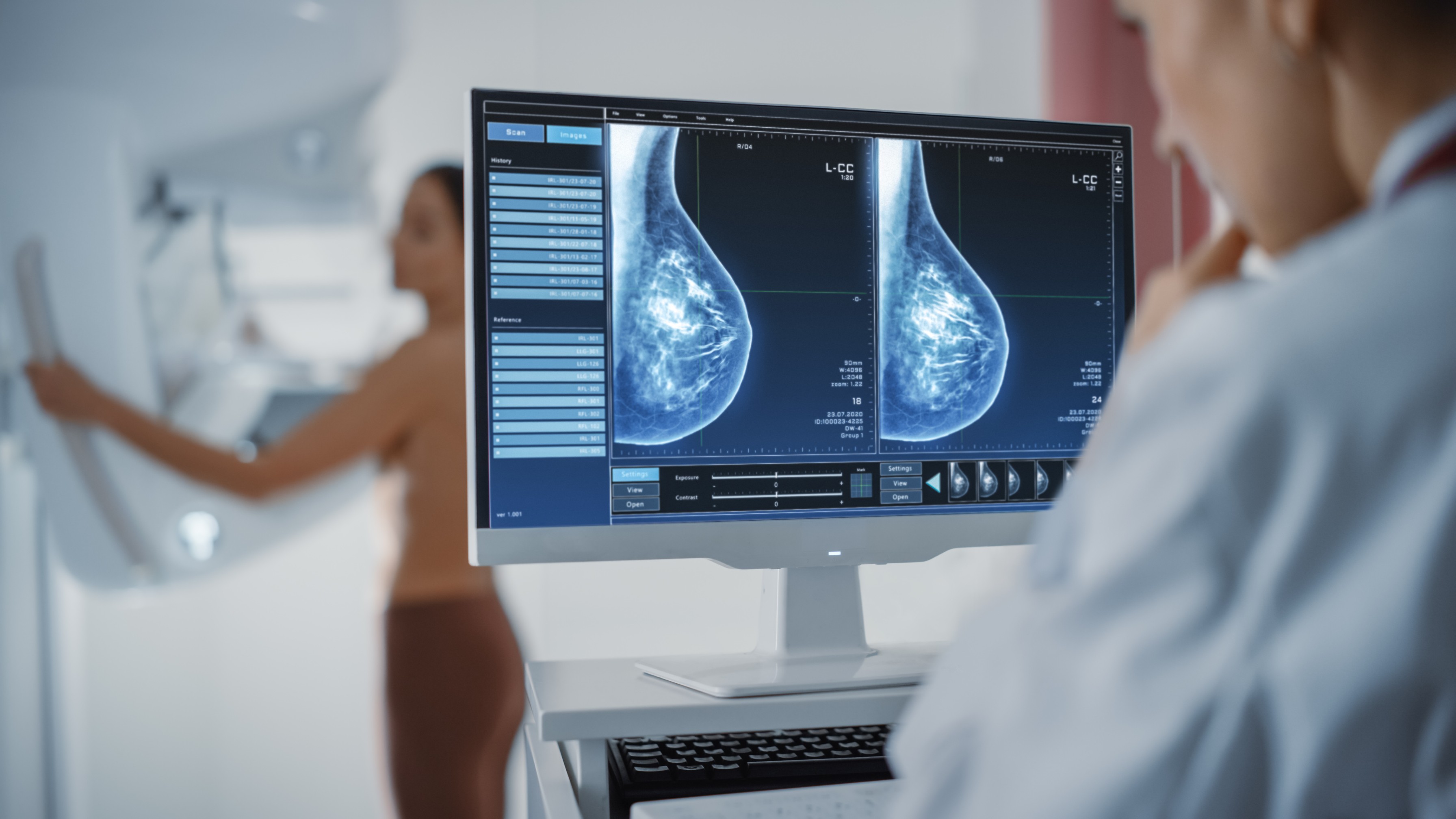What is a mammogram?
A mammogram is an X-ray machine specifically designed for breast imaging. Doctors tend to recommend that women over 40 at average risk for breast cancer schedule preventive screening mammograms as part of their annual well checks.
However, mammograms may be appropriate for women in their 20s or 30s if certain risk factors are present. Preventive screenings are remarkably accurate in detecting breast cancer in its early stages–often before symptoms even emerge.
When detected at an early stage, over 90% of women will survive breast cancer.1 When there are signs or symptoms of breast abnormalities, mammograms act as diagnostic imaging tools for breast cancers, tumors, and other conditions.
What do mammograms show?
Mammograms are imaging tests that screen for signs of cancer, but they can also detect noncancerous conditions like benign tumors, fibroadenomas, cysts, and calcifications.2
- Tumors of the breast can be benign or malignant. A benign tumor is unlikely to grow, change, or be a risk to you. A malignant tumor will likely require further testing (think biopsy or aspiration) and imaging (a breast ultrasound). The additional imaging tests will help the radiologist better understand the shape, size, and borders of the mass.
- Fibroadenomas are firm, round lumps in your breast that move when manipulated by your fingers (as opposed to staying fixed in one spot). These benign breast lumps are common and are particularly prevalent in young women. However, any solid breast lump that grows or changes significantly will likely be removed for analysis and to rule out any malignancy.
- Cysts are common, fluid-filled masses in the breast that rarely turn out to be cancerous. A cyst is diagnosed via breast ultrasound and is easily distinguishable from a cancerous mass.
- Calcifications are microscopic flecks of calcium in the breast’s soft tissue. These salt-like grains may be indicative of early breast cancer, depending on their quantity, shape, size, and how they’re grouped. Interestingly, larger calcifications tend not to be associated with breast cancer in most cases.
When should you get your first mammogram?
So, at what age should you get your first mammogram?
It depends.
First–and this is important–you should contact your doctor straight away if you find a new lump or abnormality on your breast that gets bigger or doesn’t go away, whether you’re 25 or 55. (Conducting regular self-exams on your breasts will help you become familiar with what feels normal–and what doesn’t.)
Otherwise, generally speaking, it’s not recommended for women under 40 to get preventive mammograms. But it also depends on a few things about you and your history, and whether you have a higher than average risk of breast cancer. Certain factors might increase your risk of breast cancer.
Be sure to tell your healthcare provider if any of these apply to you:
- You have a direct relative who has or had breast cancer (mother, sister, or daughter), particularly at a young age. Your mammographic screenings should start 10 years earlier than the age the first affected relative was at the time of their diagnosis.3
- Your family has a history of breast cancer diagnosis before age 50, triple negative or bilateral breast cancer, ovarian cancer at any age, pancreatic cancer, or metastatic cancers.
- You have a known genetic mutation that increases your risk of developing breast cancer, like BRCA1 or BRCA2. It is recommended that screening mammography begin at age 25.
- You’re of Ashkenazi Jewish descent. (1 in 40 Ashkenazi Jewish women carry the BRCA1 or BRCA2 mutation.)
- You have a history of chest radiation therapy.
Though under-40 breast cancers only account for 5% of all breast cancer cases, it is critically important that they be detected as early as possible for a number of reasons:
- These breast cancers have the potential to be more aggressive and less treatment-responsive.
- Women who get breast cancer young are more likely to have genetic mutations that could predispose them to other cancers.
- Having breast cancer at a young age could impact fertility and pregnancy after treatment.
Younger women have denser breasts than older women, so it can be difficult to distinguish a lump from normal tissue. Regardless, it’s always best to err on the side of caution and tell your doctor if you feel something unusual. They can refer you for imaging or further testing.
If your doctor is dismissive of your concerns and won’t order you a breast imaging scan, it might be time to look for a more supportive doctor.
Where to schedule a mammogram
You can easily find a breast imaging center near you by using scan.com’s scan search tool.
Resources:
- clevelandclinic.org: Breast Cancer in Young Women
- breastcancer.org: What Mammograms Show: Calcifications, Cysts, Fibroadenomas
- nih.gov: Effect of mammography on breast cancer risk in women with mutations in BRCA1 or BRCA2

